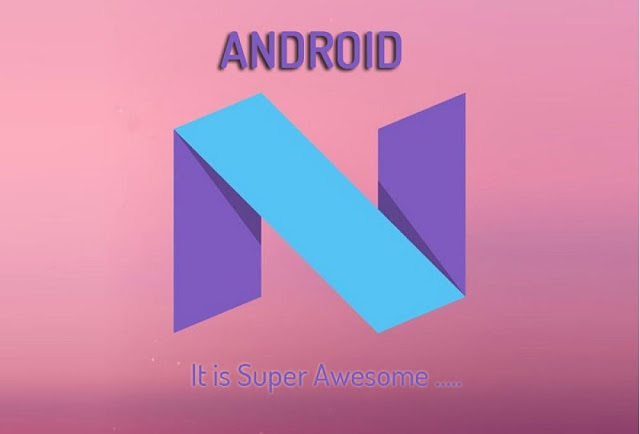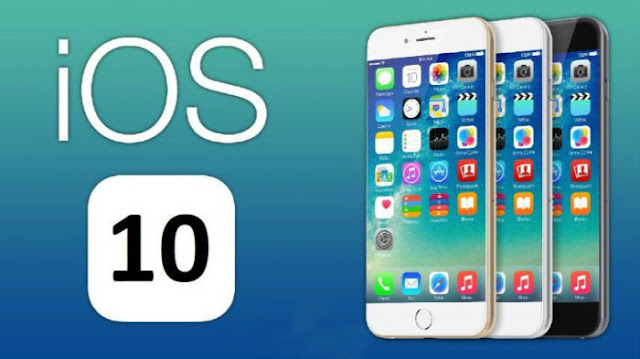
Anybody that saw the Android N designer sneak peaks will undoubtedly see a great deal of natural Android Nougat highlights here. The manufactures are similar to the point that on the off chance that you were running Android N dev sneak peak 5, the authority OTA for the Android 7.0 overhaul was a modest 49.5 MB, contrasted with 1.1 GB on the off chance that you redesigned from Marshmallow.
While a few of us may have seen expansive parts of Nougat as of now, we'll be drawing closer this Android 7.0 survey from the point of view of another client – somebody who hasn't "seen everything some time recently". We need to give a clearing review of Android 7.0 components, yet we'll additionally attract correlations with Marshmallow where significant and give connection examination of elements that showed up in the pre-discharge forms of Android N yet that didn't exactly make it to the last form.
On the off chance that I needed to whole Android Nougat up more or less, I'd say that it's Android putting its foundations down. The general feel of Android has turned out to be progressively steady since Lollipop, with less component flip slumping, less execution issues and a more noteworthy spotlight on shine. Nougat is about broadening usefulness, enhancing previous components and further growing what's conceivable in stock Android.
As you probably are aware, Marshmallow to a great extent kept up the general look of Lollipop however prepared in some huge new components like Doze Mode, the unique finger impression API and granular authorizations. One year on and Nougat goes with the same pattern, keeping up the home screen and application drawer configuration of Marshmallow, however burrowing significantly more profound, laying the crucial foundation for what is yet to come.
Part screen mode: how it works:
Nougat at last conveys split-screen mode to stock Android, an element that has been around in producer skins and custom ROMs since for eternity. Android Nougat's implicit rendition is in some routes superior to what we've seen some time recently, however it can likewise be somewhat… over the top. Presently, take a full breath as I walk you through how everything functions.
Part screen works in both representation and scene mode, with the two "windows" just being resizable in picture mode. Application engineers can set their own base application stature, yet in scene mode you're screwed over thanks to a 50/50 width split, which really bodes well.
Brisk exchanging applications is the best
Brisk exchanging is fundamentally simply rearranging between the two most as of late utilized applications. It works framework wide, so you can snappy switch at whatever point you're in a full-screen application and you can likewise utilize it in the optional window of split-screen mode.
Just twofold tap the application diagram catch and you'll switch between your two latest applications in your auxiliary window. (The same signal flips between full-screen applications when not in split-screen mode.)
The nearness of the brisk exchanging activity – potentially my most loved Nougat highlight of all – hence implies you can triple errand in multi-window mode. For instance, you can watch a YouTube video in the top window and fast switch between two social sustains in the base. On the other hand you can make an email in the top sheet while at the same time exchanging between a note application and a site page in the base window. It's quite wonderful.
Notices: upgraded, packaged and Quick Reply-capable
The notices territory in Nougat has gotten a slight makeover, getting rid of the Google Now-esque cards from Marshmallow and going super level and full-width. You get more data and less squandered space in them as well, which is precisely what you need from a warning. In like manner, packaged warnings and Quick Reply are so clear thus helpful it's amazing they haven't showed up in stock Android up to this point.
Framework UI Tuner is back
For those of you that favored the 'sliding scale' for setting the significance of application warnings from the engineer reviews, you can without much of a stretch empower it in System UI Tuner by means of Power notice controls.
To add System UI Tuner to your Settings menu, simply tap and hold the rigging symbol in the Quick Settings until it turns and your gadget vibrates. You'll now discover it at the base of the Settings menu. Framework UI Tuner likewise contains the switch for the split-screen swipe-up signal and flips for which symbols are unmistakable in the status bar. You likewise discover some Do Not Disturb alternatives there.
Multi-dialect support, emoji and application joins
Nougat now lets you set different areas and additionally an essential and auxiliary dialect – and switch effectively between them – which is clearly a colossal arrangement for bi-lingual Android clients and continuous explorers. You additionally have full control over the amount of data is shown on-screen with the option of a basic DPI changer in the Display settings.
Slide to one side to fit more stuff on screen and to one side to make everything greater. This is another straightforward however amazing element to have in stock Android, beforehand requiring an alter to the gadget's build.prop document. It'll come in additional convenient on extra large screen telephones and tablets.
New Settings menu
The Settings menu has been reconfigured in Android 7.0, with the two essential changes being the expansion of a ground sirloin sandwich menu on the left and the nearness of high-request data under every Settings segment title. The first of these will be extremely recognizable: it's the same component you're utilized to for getting to Google Now and the route drawer in numerous Google applications.
Despite the fact that you can get to it at whatever time, once you're in a sub-menu in Settings you'll see the cheeseburger menu symbol at the upper left, which replaces the requirement for the back catch. Tap it (or swipe from the left edge) and you can hop to some other part of the Settings menu right away without having to over and again tap the back bolt.
Notwithstanding when you can't see the symbol, as in the Advanced Wi-Fi Settings or on the primary Settings page, you can even now swipe it out. It's a convenient 'snappy departure' highlight regardless of the fact that it's not prone to be utilized by numerous individuals. Like a considerable measure of new components in Android 7.0 you can utilize it in the event that you need to, however in the event that not, you won't notice it's there.
Data Saver
Information Saver is not precisely advanced science, but rather it puts the devices in your grasp as opposed to in those of application designers. Information Saver fundamentally gives you a chance to deny web access to foundation applications when you're associated with cell information. You'll additionally get a vast update at the highest point of the Settings menu when Data Saver is empowered to remind you it's dynamic.
Camera alternate ways
The upgrade to the Google Camera that accompanies Nougat on Nexus gadgets additionally adds another turn motion to switch amongst front and back cameras. Not at all like on Moto gadgets, it can't be utilized to dispatch the camera so it just works when the camera application is as of now open.
Luckily, the remarkably helpful force catch alternate way returns, so all you have to do to in a split second dispatch the camera is twofold press the force catch. You may need to empower this component in the Display settings first however.





